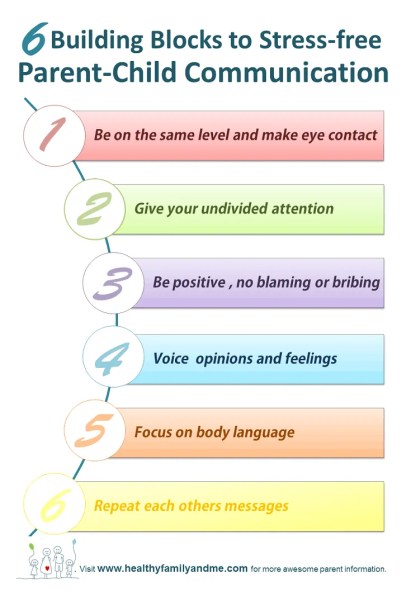As parents, we all strive to have open and effective communication with our children. We want to create an environment where our children feel comfortable expressing themselves and where they can trust that their thoughts and feelings will be heard and understood. However, in today’s fast-paced world, with distractions everywhere, it can be a challenge to prioritize and maintain meaningful conversations with our children. But fear not! In this blog post, I will share some personal experiences and offer valuable tips on effective communication strategies for parents and children.

Establishing a strong foundation for communication begins from the earliest stages of childhood. It’s important to create a safe and nurturing environment where children feel comfortable expressing themselves, without fear of judgment or criticism. One of the most effective ways to do this is by actively listening to your child. When they speak, give them your undivided attention, maintain eye contact, and show genuine interest in what they are saying. This simple act of truly listening not only validates their feelings but also encourages them to communicate more openly.
I remember a time when my son, Michael, came home from school upset and frustrated. Instead of brushing him off with a casual “It’ll be fine,” I took the time to really listen to him. As he poured his heart out to me about a disagreement he had with a friend, I remained patient and empathetic. By the end of our conversation, not only did he feel more at ease, but we also brainstormed some solutions together. This is the power of active listening – it helps you connect with your child on a deeper level and fosters problem-solving skills.
Another essential component of effective communication is fostering open dialogue. Encourage your children to speak their minds and share their thoughts and opinions. Create opportunities for discussion by asking open-ended questions, such as “How was your day?” or “What do you think about this situation?” This not only shows your child that you value their input but also helps them develop critical thinking skills and the ability to articulate their thoughts.
One strategy I have found particularly useful in encouraging dialogue is incorporating storytelling into our daily routines. Bedtime stories or making up imaginative tales during car rides provide a perfect setting for conversations to flow naturally. These stories often become a platform for discussing emotions, problem-solving, and moral lessons. It’s amazing how a simple story can ignite limitless conversations and bridge the gap between parent and child.
In addition to active listening and open dialogue, it is crucial to treat your child’s emotions with respect and compassion. We often underestimate the impact that feelings can have on our children’s well-being. Validating their emotions by acknowledging and accepting them helps build trust and strengthens the parent-child bond. Whenever my daughter, Emily, is upset, I try to avoid dismissing her feelings by saying things like “Don’t be silly, it’s not a big deal.” Instead, I reassure her that it’s okay to feel the way she does and that I am there to support her.
Furthermore, as parents, we must be mindful of our own communication styles and be open to reflecting on our approach. We can create a safe space for our children to express themselves, but it’s crucial that we also model effective communication. This means being aware of our tone, body language, and choice of words. When we speak with kindness and empathy, our children learn to do the same.
Technology has become an integral part of our lives, and it undoubtedly affects our communication with our children. While devices can provide learning opportunities and entertainment, they can also hinder effective communication. It is essential to establish clear boundaries and promote device-free times to ensure quality conversations. Designate specific times, like family dinners or before bedtime, as “no technology zones” to encourage meaningful interactions. By disconnecting from screens, we reconnect with our children and create space for authentic conversations.
Lastly, don’t forget the power of quality time. Amidst our hectic schedules, it’s crucial to prioritize bonding moments with our children. Engage in activities that your child enjoys, whether it’s playing games, going for walks, or cooking together. These shared experiences not only create lasting memories but also provide opportunities for meaningful conversations to take place naturally. When you spend quality time with your child, you build a strong foundation of trust and open communication.
Effective communication is a lifelong skill that will benefit your child in all areas of their life. By actively listening, fostering open dialogue, respecting emotions, modeling good communication, setting technology boundaries, and prioritizing quality time, you can create an environment where your child feels valued, heard, and understood. Remember, communication is a journey, and it takes time and effort from both parents and children. So let’s embark on this journey together and cultivate strong and meaningful connections with our children.


